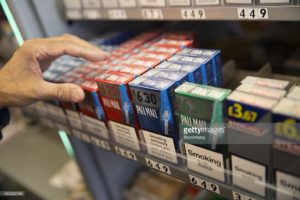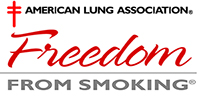 Tobacco companies spent over $8.47 billion on marketing in retail establishments, also called point-of-sale marketing, in 2015 (the most recent figures available). This article is part of a series highlighting ways that states and localities are countering the deep pockets of the tobacco industry with policies regulating where and how tobacco products are sold.
Tobacco companies spent over $8.47 billion on marketing in retail establishments, also called point-of-sale marketing, in 2015 (the most recent figures available). This article is part of a series highlighting ways that states and localities are countering the deep pockets of the tobacco industry with policies regulating where and how tobacco products are sold.
There’s a reason why 93 percent of tobacco displays and 85 percent of tobacco shelving units are in the counter zone of retail establishments — in most stores, the cashier counter is the best place to encourage impulse purchases


